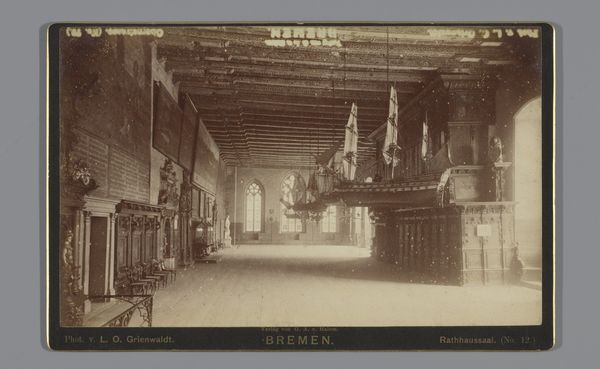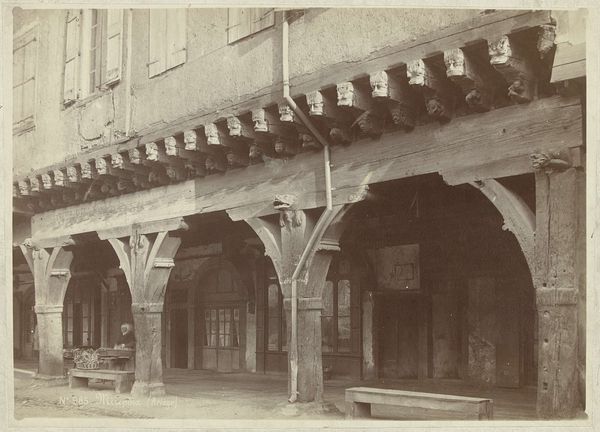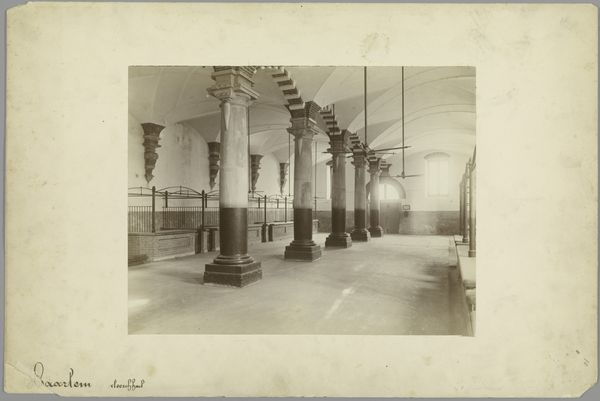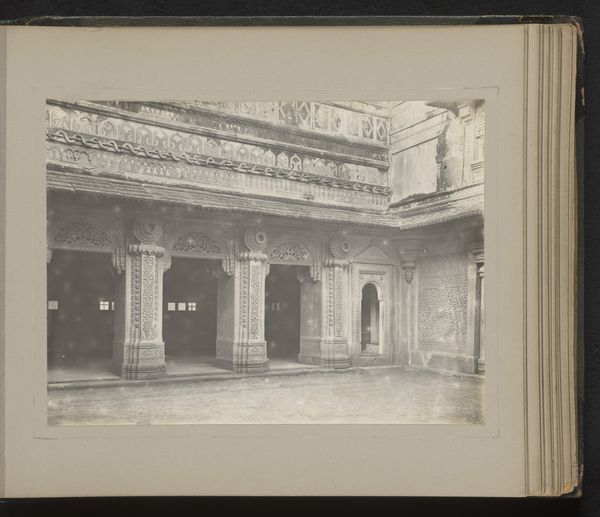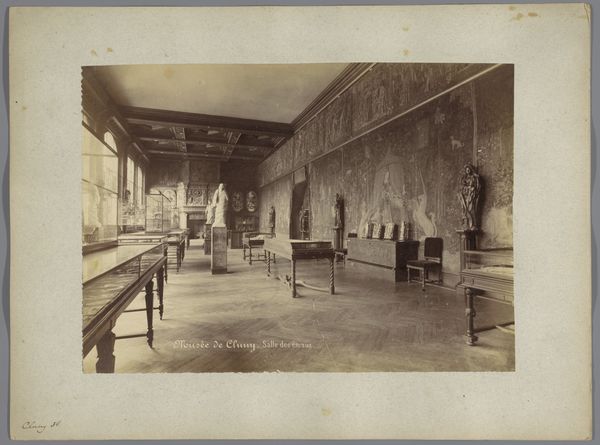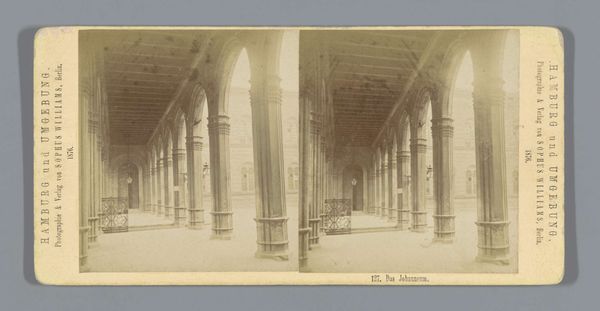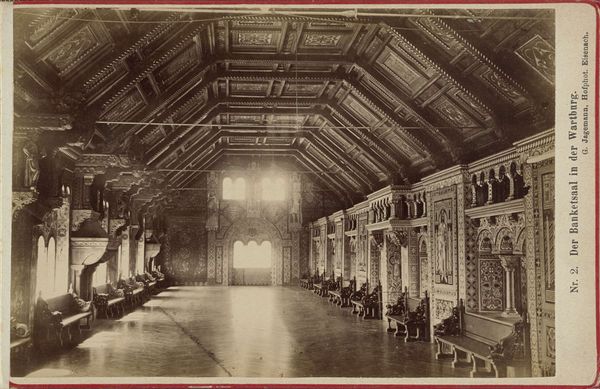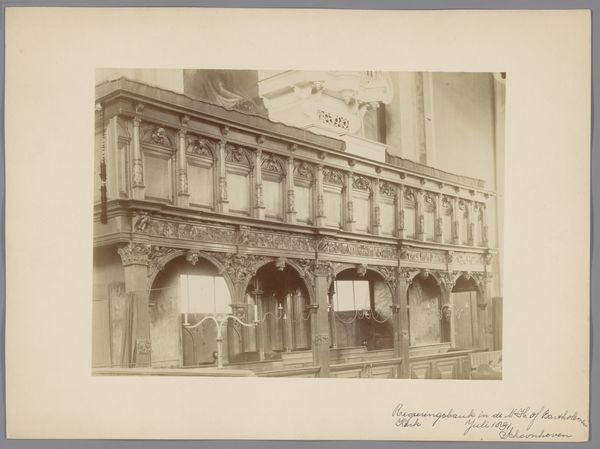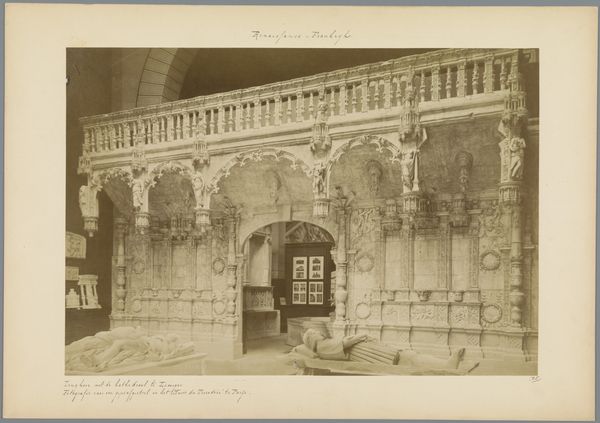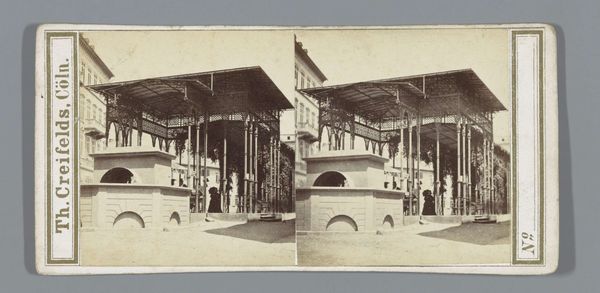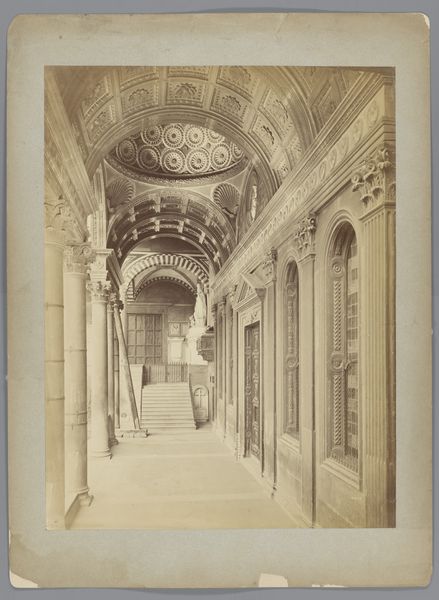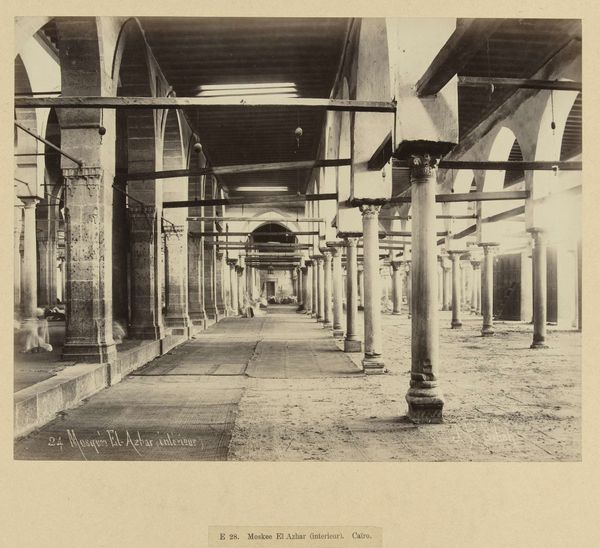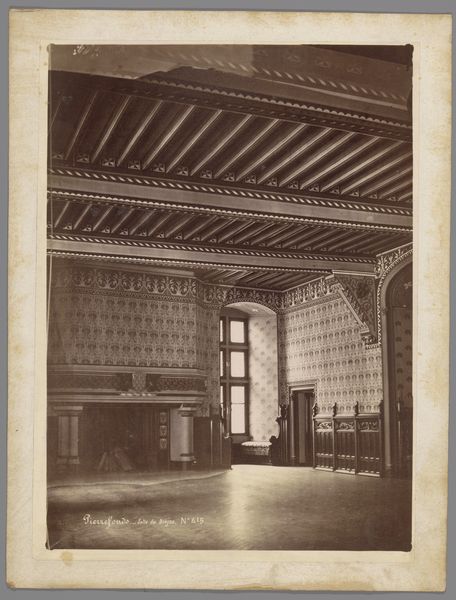
photography, albumen-print
#
photography
#
cityscape
#
albumen-print
Dimensions: height 109 mm, width 168 mm
Copyright: Rijks Museum: Open Domain
Editor: This is "Bovenzaal van het stadhuis in Bremen," a photograph, more specifically, an albumen print, taken by Louis Koch between 1880 and 1900. I'm struck by the cavernous scale of the space and how that's captured in the image. What's your take on this work? Curator: Looking at this albumen print, I'm immediately drawn to the labor involved. Think of the processes required to create it – the mining and refining of silver for the emulsion, the cultivation of hens for the albumen used as a binder, the physical act of taking the photograph itself with bulky equipment. This contrasts sharply with our contemporary ideas of instantaneous, dematerialized photography. Do you see how that process alters the value? Editor: That's interesting, I never really considered the work involved in early photography, especially albumen prints. How does the subject, this city hall, tie into the materiality? Curator: It makes me consider the context. We're not simply looking at an interior; we're seeing a symbol of civic power. These opulent interiors, built and maintained with considerable resources, represent a social structure. And consider the model ships suspended from the ceiling—powerful signifiers of Bremen's mercantile history and its economic foundations, now recreated in miniature as objects for civic consumption and pride. The photograph reproduces and thus helps perpetuate these very visible signs of Bremen’s cultural and economic prowess. Editor: So, by examining the materials and subject of this print, we gain insight into the economic and social history of Bremen? Curator: Precisely. The print isn’t just an image; it's a physical record of the social, material, and economic conditions of its time, one embedded with labor, social class, and material transformation. The albumen print preserves both Bremen’s material and mercantile legacies. What do you make of that? Editor: That's definitely given me a new perspective on considering all the layers of significance within the art object, going beyond just the visual.
Comments
No comments
Be the first to comment and join the conversation on the ultimate creative platform.
